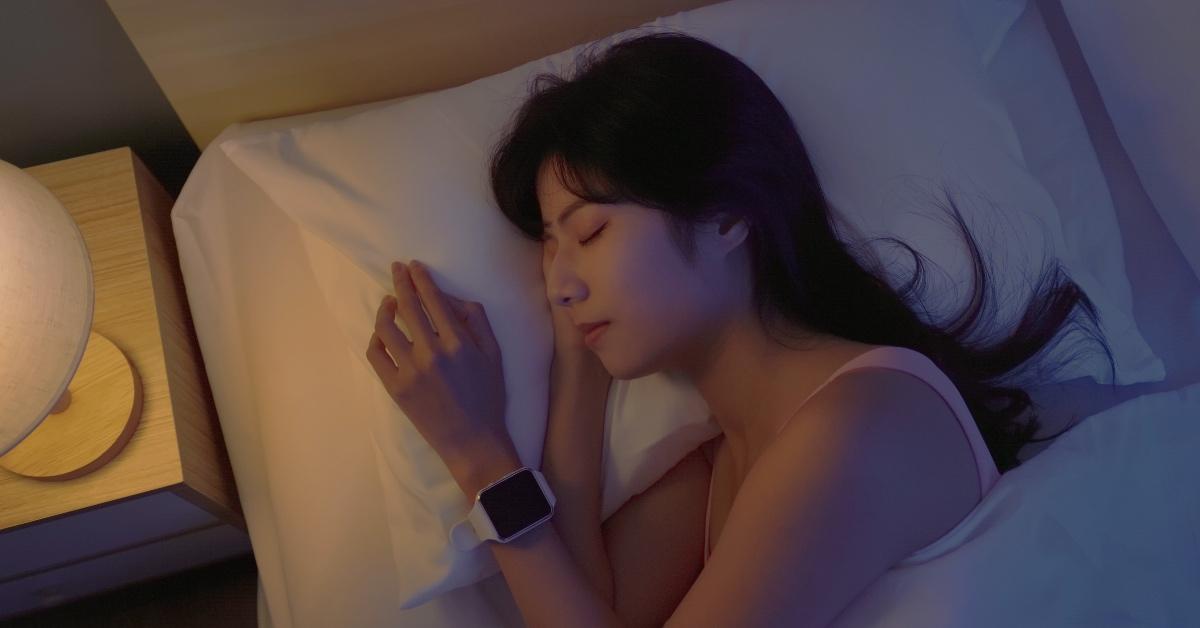"Core Sleep" Is Another Term for a Stage of Non-REM Sleep: Why It's Important, Explained
Is "core sleep" on your Apple Watch or device confusing you? Our guide to what "core sleep" really means and why it's important to your rest cycle.
Published March 15 2024, 1:33 p.m. ET

It's no secret that sleep is essential to our health. Not only does sleep help support your mood, but it also boosts your immune system, your metabolism, and your brain function. Getting quality sleep can be tricky if you work a job with odd hours or have many responsibilities.
Although there are natural ways to get better sleep and apps to help you wind down or track your progress, some people have become confused by the phrase "core sleep" on Apple devices. What is core sleep, what does it mean for your sleep cycle, and why is it important? Your burning questions about sleep are answered below.

What is core sleep? It's another term for stage 3 non-REM sleep.
According to the Cleveland Health Clinic, the average sleep cycle lasts 90 minutes, and humans generally require at least eight hours of sleep per evening. Older people need less sleep, while those under six years old require 10-17 hours of sleep a day, depending on their age.
Core sleep is one of the non-REM stages of the sleep cycle and is considered the deepest part. Let's break it down below.
There are two kinds of sleep: non-REM sleep (NREM) and REM sleep. "REM" stands for "rapid eye movement." REM sleep is where people experience dreams.
There are several stages within the two kinds of sleep. According to Healthline, all non-REM sleep stages are N1, N2, and N3. Then, there's REM sleep, which accounts for roughly 25 percent of your sleep cycle.
So, where does core sleep come into play? In 1992, one study defined core sleep as "the essential part of the sleep and is mainly slow wave sleep. This type of sleep is composed of stages 3 and 4 on non-REM sleep (NREM 3-4)."

Healthline notes that as of 2024, stages 3 and 4 of non-REM sleep have been combined into one.
Regardless, N3 is known for being the deepest stage of sleep that accounts for 25 percent of the sleep cycle and the stage where "the body repairs and regrows tissues, builds bone and muscle, and strengthens the immune system. Sleepwalking, night terrors, and bedwetting may occur."
According to the Cleveland Health Clinic, as people grow older, they spend less time in N3 and more time in N2, which accounts for roughly 45 percent of your sleep cycle.

Apple products have confused users about the definition of core sleep.
Unfortunately, Apple products have confused users who are attempting to track their sleep, specifically on the Apple Watch.
According to LifeHacker, Apple refers to its light sleep stage as "core sleep, " which contradicts what science says. Apple Watches try to differentiate between four sleep stages for the wearer: awake, core (light) sleep, deep sleep, and REM sleep.
What's the reason behind the change? Apple says that they were worried people might confuse the term, stating, "The label Core was chosen to avoid possible unintended implications of the term light, because the N2 stage is predominant (often making up more than 50 percent of a night's sleep), normal, and an important aspect of sleep physiology, containing sleep spindles and K-complexes."
Apple engineers were worried people might think "light" sleep was less important, so they wanted to give it a more authoritative name.